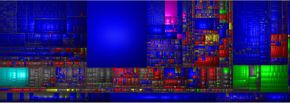Conclusion June 29, 2012
As the Electronic Records Archive Start-Up grant, funded by the National Historical Publications and Records Commission, concludes, the MFAH has piloted an Electronic Transfer Protocol (ETP) consisting of a database application and procedures for its use. The ETP supports the transfer of institutional electronic records into archival custody with metadata and access privileges intact. In its final version, the ETP will also support the transfer of e-mail in a quasi-native format. Training developed for the ETP applies the museum's existing Document Retention Policy (DRP), retention schedules, and records management procedures to the new protocol while highlighting the benefits of valid metadata creation, management, and preservation.
However, the ETP is only the first stage in a multi-stage approach that will ultimately allow for the ingest of electronic records into a complete Electronic Record Archive (ERA) system for long-term preservation and access. The transfer protocol is equivalent to the current procedures for inventorying and preparing records for delivery to Archives. While less tedious than the process for inventorying and transferring paper records, the protocol is both voluntary and granular, asking staff to review files, make disposition decisions, and document the decisions through screen captures. In addition to the DRP and retention schedules, employees are to base submissions on folder structure, file names, creation dates and personal knowledge of the files.
As opposed to the ETP, an ERA is designed to support the traditional archival functions of accessioning, preservation, description, and providing access, in the electronic realm. A full ERA system manages and preserves electronic records that are created or received by museum employees in such a way as to ensure that they can be accessed in the future. Within an ERA, records would be protected and stored in accordance with the current ISO archival standards Open Archival Information Systems Reference Model and Space data and information transfer systems — Audit and certification of trustworthy digital repositories. In addition to these standards, the project team prepared a Request for Proposal with a total of 64 specifications – 48 required, 11 desirable and 5 extensible (meaning the functionality is wanted at some time in the future). Four complete proposals – two from open source consultants and two from commercial companies – provided the first hard lesson of the project: implementation costs for open source systems rival those of commercial products and all are expensive.
For these systems to become affordable for the majority of non-profits, different pricing models or business models (such as collaborative repositories) will have to emerge. Happily, at least one company, Tessella, has recognized the price obstacle and is beginning to offer a hosted service. In a recent webinar, Jon Tilbury, Director of Archiving Solutions, noted that one benefit of this option is that organizations, which may inaccurately estimate archival storage needs on overall data storage, pay only for what is needed. While the MFAH continues to examine pricing and funding options, the Archives will accession electronic records using the ETP and will be in a better position to assess initial storage needs and accrual rates.
While I am enthused about the accessioning stage, it is not a substitute for a full ERA System. The man hours currently required to prepare records for submission could be reduced with an ERA system. More importantly are the fixity monitoring and preservation actions that an ERA system offers. Lastly, an implementation would position the museum to benefit from developments in some of the emerging technologies such as cluster analysis and emulation.
The project team acknowledges the need of introducing tools that will help in automation of appraisal. Since many of these are still in developmental stages, the first to be introduced will likely be software to identify duplicates of files already transferred to the Archives through the ETP, eliminating the need for staff to sort through redundant files as they prepare submissions. In the interim, submissions will be encouraged through focused projects (such as transfer of committee minutes) and incentives.
Many lessons were learned in the course of the project. Personally I learned a great deal about data structure. When I began the ERA planning project, I had never heard of an Entity Attribute Value (EAV) db, so was surprised to discover I had a few. When the team began paying attention to our metadata, we learned to overcome inconsistencies in the Owner field by populating it from the Active directory - a development that will assist in future search and retrieval efforts. An analysis of all the unstructured data on the servers verified our hunch that most of it consists of master image files (knowledge that may prove useful in future storage and preservation planning). Most of all, the project team learned that we work best when we work collaboratively - Archives cannot be a substitute for IT and IT cannot be a substitute for Archives.
Documentation under the grant project, which consists of a Concept of Operations, a Request for Proposals, and the ETP pilot training manual, will be made available to the archival community following the conclusion of the grant June 30th. To obtain copies, write to archives@mfah.org.






